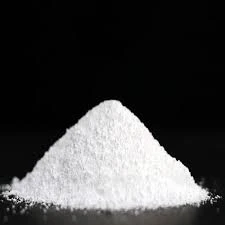Chemical Treatment of Water Ensuring Clean and Safe Supplies
Water is essential for life, serving not only as a fundamental resource for drinking but also for agriculture, industry, and sanitation. However, the natural water sources are often compromised due to pollution, contaminants, and other hazardous materials. To ensure that water is safe for human consumption and environmental health, various chemical treatment processes are employed. This article explores the importance of chemical treatment of water, the common methods used, and their impact on public health and the environment.
Importance of Chemical Treatment
Chemical treatment is crucial for several reasons. First and foremost, it helps remove harmful pathogens, such as bacteria, viruses, and parasites, that can lead to waterborne diseases. Each year, millions of people around the world suffer from illnesses caused by contaminated water, making effective treatment paramount. Furthermore, chemical treatments address chemical contaminants like heavy metals, pesticides, and industrial waste that can seep into water supplies. By mitigating these risks, chemical treatment processes not only protect public health but also safeguard ecosystems by preventing harmful substances from entering natural habitats.
Common Methods of Chemical Water Treatment
There are several chemical treatment methods employed depending on the type of contaminants present in the water
1. Coagulation and Flocculation In this initial treatment process, chemicals such as aluminum sulfate (alum) are added to water to encourage small particles to clump together, forming larger aggregates known as flocs. This process removes suspended solids and improves the clarity of water. After flocculation, the flocs are removed through sedimentation or filtration.
2. Chlorination One of the most widely used methods for disinfection, chlorination involves adding chlorine or chlorine compounds to water. Chlorine effectively kills bacteria and viruses, making water safe for drinking. However, it is crucial to monitor the amount used, as excessive chlorine can form harmful byproducts.
chemical treatment of water

3. Ozonation This method uses ozone (O3), a powerful oxidant, to disinfect water. Ozonation is effective at killing microorganisms and can also degrade organic pollutants. Unlike chlorine, ozone leaves no residual taste or odor in the water, making it an appealing option for some water treatment facilities.
4. Reverse Osmosis Although primarily a physical filtration method, reverse osmosis may involve chemical treatments to enhance effectiveness. This process forces water through a semipermeable membrane that removes ions, molecules, and larger particles, resulting in high-quality potable water. It is particularly useful for desalination and removing contaminants like heavy metals and salts.
5. pH Adjustment The pH of water is critical for both human health and the efficiency of disinfection processes. Chemicals such as lime or sulfuric acid are added to adjust the pH to an optimal level, which can enhance the effectiveness of disinfection and reduce corrosion in water distribution systems.
Environmental Considerations
While chemical treatment of water is essential for maintaining public health, it is equally important to consider the environmental impacts of these processes. The chemical residues from treatment can potentially harm aquatic ecosystems if not managed correctly. For instance, chlorine can be toxic to fish and other aquatic organisms. Therefore, water treatment facilities must implement measures to minimize environmental impact, such as dechlorination before the treated water is discharged into natural water bodies.
Conclusion
The chemical treatment of water plays a vital role in ensuring that communities have access to safe and clean drinking water. Through methods such as coagulation, chlorination, and reverse osmosis, harmful pathogens and pollutants are effectively removed, protecting public health and the environment. However, water treatment facilities must also be mindful of the ecological implications of their chemical treatments, striving for processes that not only purify water but also preserve the surrounding ecosystems. With ongoing advancements in water treatment technologies and a commitment to sustainability, we can ensure that future generations have access to this precious resource.

